Nurofen 24’s 200 mg coated tablets
$9.20
Description
The instruction for medical use
of NUROFEN® medicine
the Trade name
of Nurofen®
the International unlicensed
name Ibuprofen Dosage Form
of the Tablet, coated 200 mg
Structure
One tablet contains
active agent – an ibuprofen of 200.0 mg,
excipients: sodium of a kroskarmelloz, sodium lauryl sulfate, sodium citrate, stearic acid, silicon dioxide colloidal,
structure of a cover: sodium of a karmelloz, talc, acacias gum, sucrose, the titan dioxide (E171), a macrogoal 6000, the water purified
blackened structure for drawing an inscription: ink black [Opakod S-1-277001], alcohol industrial metilirovanny.
The description
of the Tablet of round shape, with a biconvex surface, coated white or almost white color with an inscription of black Nurofen color on one party of a tablet. On a break – white or almost white weight
Pharmacotherapeutic group
Anti-inflammatory and antirheumatic drugs. Non-steroidal anti-inflammatory drugs. Propionic acid derivatives. The ibuprofen
ATX M01AE01 Code
the Pharmacological
Pharmacokinetics Later properties of intake, an ibuprofen is quickly absorbed and distributed in an organism. Absorption of an ibuprofen – high, communication with proteins of plasma – 90%. Slowly gets into a cavity of joints, is late in synovial fabric, creating in it high concentrations, than in plasma. After absorption about 60% pharmacological of an inactive R-form are slowly transformed to an active S-form.
The maximum concentration in blood plasma are reached in 45 minutes after reception on a hungry stomach. At administration of drug with food the maximum concentration in plasma are reached in 1-2 hours.
Is exposed to metabolism in a liver. Drug is quickly and completely removed from an organism by kidneys (in an invariable look no more than 1%) and, to a lesser extent, with bile. Elimination half-life makes about 2 hours.
A pharmacodynamics
of Nurofen® – non-steroidal anti-inflammatory drug.
Has anti-inflammatory, analgeziruyushchy and febrifugal effect. The mechanism of action consists in braking of activity of cyclooxygenase of arachidonic acid that leads to suppression of synthesis of prostaglandins and interferes with release of mediators of inflammation. Нурофен® reduces the pain caused by inflammation, hypostasis and temperature increase. Besides, the ibuprofen reversibly inhibits aggregation of thrombocytes.
Indications
– head and a toothache
– migraine
– painful periods
– neuralgia
– dorsodynias
– muscular and rheumatic pains
– flu and catarrhal diseases.
The route of administration and doses
Drug is intended only for short-term use inside.
To adults and children 12 years are more senior to accept inside 1-2 tablets 1-3 times a day, washing down with water.
The interval between administrations of drug has to make not less than four hours. Not to take more than 6 pill within 24 hours.
The maximum daily dose makes 1200 mg.
Short administration of drug in the minimal effective dose necessary for elimination of symptoms is recommended. If at short-term administration of drug the symptoms remain or amplify, it is necessary to see a doctor.
In need of drug use more than 10 days, or when strengthening expressiveness of symptoms, it is necessary to consult with the doctor.
Side effects
At use of the drug Nurofen® within 2–3 days side effects are practically not observed. In case of prolonged use the emergence of following side effects is possible.
Infrequently
– the reactions of hypersensitivity which are shown urticaria and an itching
– an abdominal pain, nausea, dyspepsia
– a headache
– different types of skin rash
it is rare
– diarrhea, the increased gas generation, a constipation and vomiting
Very seldom
– heavy reactions of hypersensitivity, include edema of face, language and a throat, an asthma, tachycardia, hypotension (anaphylaxis, a Quincke’s edema or a heavy acute anaphylaxis)
– deterioration in a course of bronchial asthma and a bronchospasm
– a round ulcer, perforation or gastrointestinal bleeding, a melena, a hematemesis, in certain cases from the death, is more often at patients of advanced age
– a stomacace, gastritis
– exacerbation of nonspecific ulcer colitis and Crohn’s disease
– aseptic meningitis (in isolated cases)
– an acute renal failure, papillonekroz, especially at prolonged use, in combination with increase in level of urea in blood serum and appearance of hypostases
– abnormal liver functions
– hemopoiesis disturbances (anemia, a leukopenia, thrombocytopenia, a pancytopenia, an agranulocytosis). The first signs are fever, a sore throat, formation of ulcers in oral cavities, grippopodobny symptoms, heavy breakdown, causeless appearance of bleedings and hematomas
– severe forms of skin reactions (Stephens-Johnson’s syndrome, a multiformny erythema and a toxic epidermal necrolysis)
– at patients with autoimmune disorders (system lupus erythematosus, the mixed disease of connective tissue) during treatment by an ibuprofen observed isolated cases of emergence of symptoms of aseptic meningitis, in particular, the stiff neck, a headache, nausea, vomiting, fever or disturbance of orientation
– are available messages about developing of hypostasis, arterial hypertension and heart failure, in connection with use of non-steroidal anti-inflammatory drugs (NPVP)
According to given clinical and epidemiological trials and to epidemiological data, prolonged use of an ibuprofen, especially in high doses (2400 mg a day), can be connected with small increase in risk of development of trombotichesky complications (for example, a myocardial infarction or a stroke).
Contraindications
– hypersensitivity to an ibuprofen or to any of drug components
– the reactions of hypersensitivity in the anamnesis (in particular, bronchial asthma, rhinitis, a Quincke’s edema or a small tortoiseshell) provoked by intake of acetylsalicylic acid or other non-steroidal anti-inflammatory drugs
– a peptic ulcer in a stage an aggravation/helcomenia or instructions on presence of a peptic ulcer / episodes of a helcomenia in the anamnesis (two and more confirmed episode of a peptic ulcer or a helcomenia)
– bleeding from digestive tract or perforation, NPVP provoked by use, in the anamnesis
– a heavy liver failure
– a heavy renal failure
– heavy heart failure
– hereditary intolerance of fructose, glucose malabsorption – galactoses, deficiency of enzyme of sukrazy-isomaltase
– pregnancy (III trimester) and the lactation period
– children’s age up to 12 years.
Medicinal interactions
It is necessary to avoid simultaneous use of an ibuprofen (and other NPVP) with the following drugs:
Aspirin: except for the low doses of aspirin (no more than 75 mg a day) appointed by the doctor as combined use can increase risk of emergence of side effects.
Experimental data demonstrate that the ibuprofen can reduce dezagregatsionny effect of aspirin at co-administration of these drugs. However, limitation this yielded and lack of information on extrapolation of results of the researches ex Vivo on a clinical situation confirm unauthenticity of emergence of this effect at regular use of an ibuprofen, and at incidental use of drug of clinically relevant influence on dezagregatsionny ability of aspirin it is not observed.
Other NPVP, in particular, selection inhibitors of cyclooxygenase-2: it is necessary to avoid simultaneous use of two and more drugs from the NPVP group because of possible increase in risk of emergence of side effects.
With care to appoint along with the following drugs:
Glucocorticosteroids: because of possible increase in risk of developing of ulcers or gastrointestinal bleeding.
Hypotensive drugs and diuretics: NPVP can reduce efficiency of drugs of these groups. Simultaneous use with diuretics can lead to increase in nephrotoxicity of NPVP.
Anticoagulants: NPVP can enhance effect of anticoagulants, in particular, of warfarin.
Antiagreganta and selective serotonin reuptake inhibitors (SSRI): the increased risk of developing of gastrointestinal bleeding.
Cardiac glycosides: co-administration of NPVP and cardiac glycosides can lead to aggravation of heart failure, reduction in the rate of glomerular filtration and increase in concentration of cardiac glycosides in blood plasma.
Lithium drugs: there are increases in concentration of lithium given about probability in blood plasma against the background of use of NPVP.
Methotrexate: there are increases in concentration of a methotrexate given about probability in blood plasma against the background of use of NPVP.
Cyclosporine: increase in risk of nephrotoxicity at co-administration of NPVP and cyclosporine.
Mifepristone: reception of NPVP should be begun not earlier than in 8-12 days after intake of mifepristone as NPVP can reduce efficiency of mifepristone.
Takrolimus: at co-administration of NPVP and takrolimus the increase in risk of nephrotoxicity is possible.
Zidovudine: simultaneous use of NPVP and zidovudine can lead to increase in hematologic toxicity. Are available given about the increased risk of developing of a hemarthrosis and hematomas at the HIV-positive patients with hemophilia receiving joint treatment by a zidovudine and an ibuprofen.
Antibiotics of a hinolonovy row: at the patients receiving joint treatment by NPVP and antibiotics of a hinolonovy row the increase in risk of developing of spasms is possible.
Special instructions
Undesirable effects can be minimized if to take the drug during a short period, in the minimal effective dose necessary for elimination of symptoms.
At people of advanced age the increased frequency of side reactions against the background of use of NPVP, especially gastrointestinal bleedings and perforation, in certain cases from the death is observed.
Influence on respiratory organs: at patients with bronchial asthma or an allergic disease in an aggravation stage and also at patients with the anamnesis of bronchial asthma / an allergic disease drug can provoke a bronchospasm.
Sharing with other NPVP: it is necessary to avoid simultaneous use of an ibuprofen with other NPVP, in particular, selection inhibitors of cyclooxygenase-2.
A system lupus erythematosus and the mixed disease of connective tissue: use of drug for patients with a system lupus erythematosus or the mixed disease of connective tissue is connected with the increased risk of developing aseptic meningitis.
Influence on kidneys: drug can cause deterioration in function of kidneys with development of a renal failure.
Influence on a liver: drug can cause an abnormal liver function.
Influence on a cardiovascular system and cerebral circulation: it is recommended to use with care drug at patients with arterial hypertension and/or heart failure (before use it is necessary to consult with the doctor) because of the available messages about a liquid delay, increase in arterial blood pressure and appearance of hypostases against the background of use of NPVP.
According to given clinical and epidemiological trials and to epidemiological data, prolonged use of an ibuprofen, especially in high doses (2400 mg a day), it can be connected with the small increased risk of development of trombotichesky complications (for example, a myocardial infarction or a stroke). In general, epidemiological researches do not show dependence between reception of low doses of an ibuprofen (that is, 1200 mg a day and less) with the increased risk of developing a myocardial infarction.
Influence on digestive tract: it is necessary to use with care drug at the patients having in the anamnesis of a disease of digestive tract (nonspecific ulcer colitis, Crohn’s disease) as when using drugs of this group the exacerbation of these diseases is possible.
There are messages about cases of developing of gastrointestinal bleeding, ulcers and perforation at any moment of use of any drugs from the NPVP group, at existence or lack of the warning symptoms or the previous anamnesis of similar complications.
The increased risk of gastrointestinal bleeding or ulcer/perforation is connected with use of high doses of NPVP, existence in the anamnesis of the patient of a peptic ulcer, especially, complicated bleeding or perforation and also using drug at people of advanced age. At the listed categories of patients the treatment should be begun with the smallest effective dose of drug.
Patients with manifestation of toxicity from digestive tract in the anamnesis, especially sick advanced age, have to report about any unusual symptoms from digestive tract (in particular, in case of gastrointestinal bleeding), especially in an initiation of treatment.
It is recommended to use with care drug at the patients who are at the same time receiving treatment by medicines which can increase risk of developing of ulcers or bleeding, in particular, oral glucocorticosteroids, anticoagulants (warfarin), selective serotonin reuptake inhibitors or antiagregant (aspirin).
When developing gastrointestinal bleeding or ulcer at the patients receiving treatment by an ibuprofen, administration of drug should be stopped.
Influence on skin: in rare instances at use of NPVP it was reported about development of heavy skin reactions, including, from the death (exfoliative dermatitis, Stephens-Johnson’s syndrome and a toxic epidermal necrolysis). The increased risk of emergence of similar reactions is observed in an initiation of treatment: in most cases reaction develops within the first month of administration of drug. At the first symptoms of an enanthesis, damages of a mucous membrane or other manifestations of hypersensitivity the administration of drug should be stopped.
There are limited data that the medicines inhibiting synthesis of cyclooxygenases/prostaglandins can cause disturbance of reproductive function in women owing to influence on process of an ovulation. This effect is reversible at the termination of administration of drug.
Before prescribing of drug it is necessary to establish tolerance of fructose. One tablet contains 0.1161 g of sucrose, to appoint carefully sick diabetes.
Pregnancy and the period of a lactation
It is necessary to avoid use of Nurofen® within the first six months of pregnancy.
During feeding it is necessary to stop breastfeeding.
Features of influence of medicine on ability to run transport and other potentially dangerous mechanisms
Considering possible side effects, it is necessary to be careful when driving and potentially dangerous mechanisms.
Overdose
At children the symptoms can arise after reception of the dose exceeding 400 mg/kg of body weight. At adults the dose-dependent effect is less significant. Elimination half-life of drug at overdose makes 1.5 — 3 hours.
Symptoms: at most of the patients who used clinically significant doses of NPVP, symptoms of overdose are limited to nausea, vomiting, pains in epigastriums or, more rare, diarrhea. Emergence of such
symptoms as sonitus, a headache and gastrointestinal bleeding is possible. In more hard cases manifestations of toxicity from the central nervous system are observed, in particular, drowsiness, occasionally – excitement and also a disorientation or a coma, in rare instances arise spasms. In cases of a serious poisoning the metabolic acidosis and increase in a prothrombin time can develop that is probably connected with interactions of drug and the circulating blood-coagulation factors. There can be an acute renal failure and injury of a liver. At patients with bronchial asthma the exacerbation of this disease is possible.
Treatment: symptomatic and supporting, with obligatory ensuring free passability of airways, monitoring of warm activity and key indicators of activity before normalization of a condition of the patient. Oral administration of activated carbon within one hour after reception of potentially toxic dose of drug is recommended. Frequent or long spasms should be stopped intravenous administration of diazepam or lorazepam. In bronchial asthma the use of bronchodilators is recommended.
A form of release and packing
On 6 or 12 tablets in blister strip packaging from a film of PVH/PVDH and aluminum foil.
On 1 (on 6 or 12 tablets) or 2 (on 12 tablets) planimetric packing together with the instruction for medical use in the state and Russian languages place in a cardboard pack.
To Store storage conditions in the dry place at a temperature not above 25 °C.
To store out of children’s reach!
3 years
not to apply a period of storage after expiry date.
Prescription status
According to the prescription
of Proizvoditel Rekitt Benkizer Helsker International Ltd,
Thane Road, Nottingham, NG90 2DB, Great Britain
the Owner of the registration certificate
of Rekitt Benkizer Helsker International Ltd,
Thane Road, Nottingham, NG90 2DB, Great Britain
the Address of the organization accepting in the territory of the Republic of Kazakhstan claims of consumers on quality of products (goods)
Republic of Kazakhstan, 050010, Almaty, Dostyk St., 85 “And”, office 116.
Ph.: +7 (727) 272 88 04, fax: +7 (727) 266 27 96
Ph. of hotline: 8-800-505-1-500 (call free)
E-mail:
To Develop contact_ru@reckittbenckiser.com
Additional information
| Ingredient |
|---|





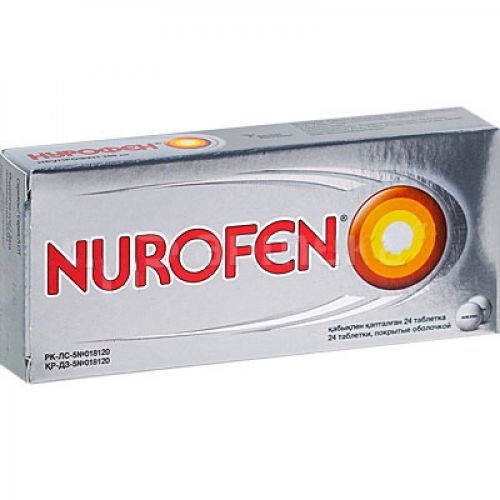
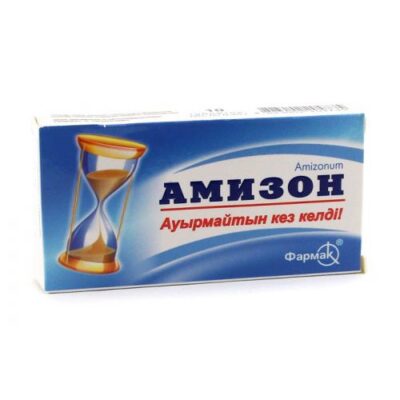
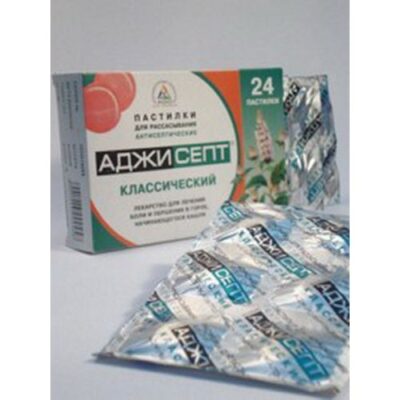
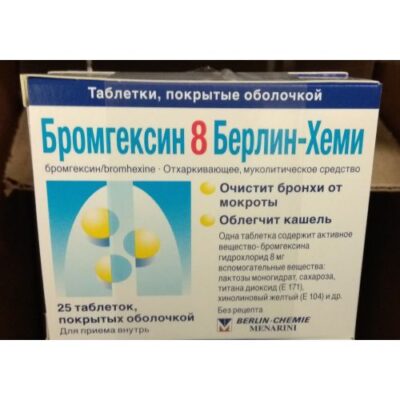
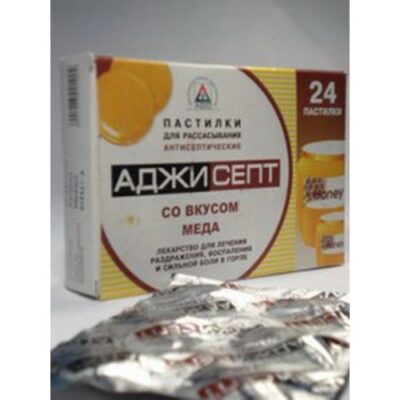
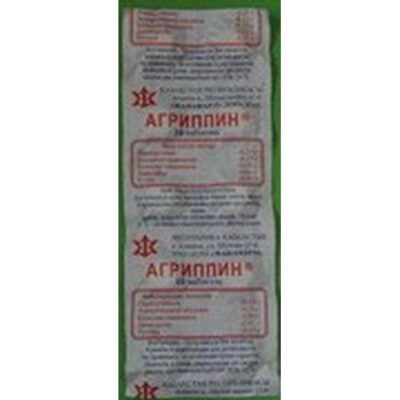
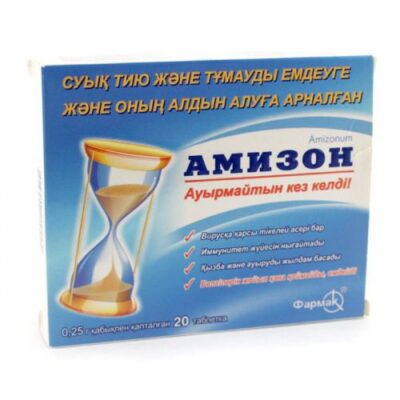
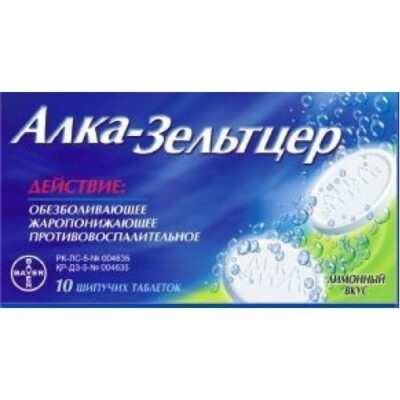
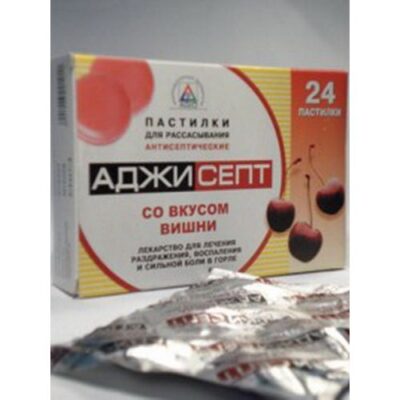
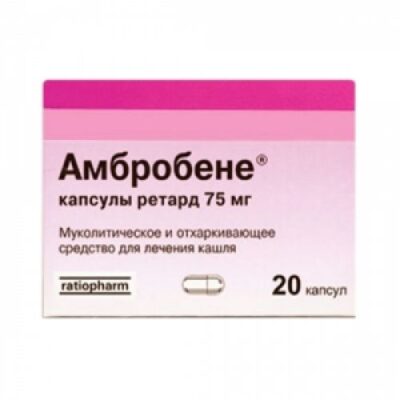
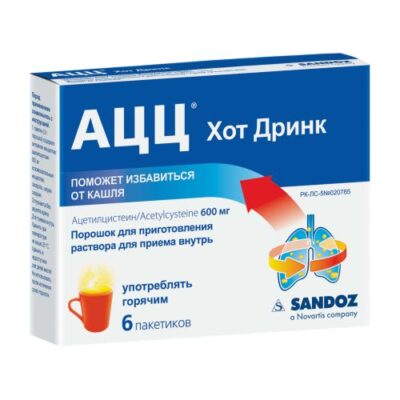






Reviews
There are no reviews yet.